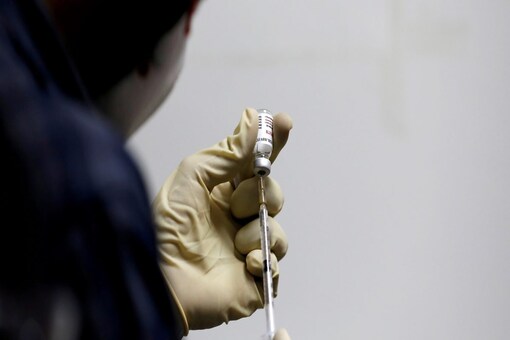It is the first protein subunit vaccine that is reportedly ready for roll-out, pending approvals. The US-based Novavax, the maker of Covovax, as the vaccine has been named in India, has already sought an emergency use nod for the vaccine in the country in collaboration with the Serum Institute. There are now five vaccines that have been cleared for use in India and the Novavax shot will represent a further boost as the country looks to vaccinate its entire adult population by the end of 2021. Here’s all you need to know.
Who Is Making Covovax? How Is India Involved?
Located in Maryland, US, the biotech company Novavax describes its work as “developing next-generation vaccines for serious infectious diseases". When the pandemic broke, the company went about configuring its nanoparticle-based approach for making vaccines to come up with a shot against the novel coronavirus, the pathogen that causes Covid-19.
In August last year, when its vaccine candidate was in mid-stage trials, the company had announced that it would be partnering the Pune-based Serum Institute of Indian to produce a minimum of one billion doses of its vaccine for low- and middle-income countries and India. A year later, in August 2021, it said it had sought approval for emergency use of its vaccine from authorities in India, Indonesia and the Philippines. The company also said that it would also apply for emergency us listing from the World Health Organisation within the month.
However, reports in the US said that the company is looking at delayed timelines for seeking regulatory approval in that country even as America is said to be facing a glut of Covid-19 vaccines.
What Kind Of Vaccine Is The Novovax Shot?
The Novavax candidate, which is also known as NVX-CoV2373, is a “recombinant nanoparticle" vaccine with the company saying it is the “first protein-based option" that has sought a green light for launch from any regulatory agency.
Vaccines that are being built against Covid-19 so far are founded on one of four basic platforms. All of them primarily target the novel coronavirus’s spike protein, which it uses to infect human cells, to train the immune system to ward off infection. So, there are the viral vector vaccines — like Covishield and Sputnik V — which use a separate virus to carry an inactivated spike protein into human cells, which triggers an immune response as a result.
Then there are nucleic acid, or genetic, vaccines that insert genetic information from the novel coronavirus to prompt the body to produce the spike protein which the immune system in turn targets by producing antibodies. The Pfizer and Moderna mRNA shots and a DNA vaccine, ZyCoV-D, being created by Zydus Cadila in India belong to this category.
Inactivated virus vaccines look to inject a weakened form of the novel coronavirus into the body to elicit an immune response. Bharat Biotech’s Covaxin is an example of this variety of vaccines.
Protein subunit vaccines, as the name suggests, contain fragments of the novel coronavirus’s spike protein, but none of its genetic material. The spike protein can nudge the immune system into mounting a response against the virus. To produce its Covid-19 vaccine, Novavax scientists first isolated the spike gene and then used another virus to carry the gene into moth cells, where it went ahead and formed the spikes of the kind that stud the novel coronavirus’s surface. These spike were then harvested and arranged as nanoparticles that are injected into the arm muscle.
Since they contain no live components of the virus, they are considered to be very safe and are also relatively easy to produce. However, since they only contain the protein and no genetic information of the target virus, the immune response can be weaker than with other types of vaccines. To amplify the immune response, therefore, these vaccines may require the use of adjuvants, which is a sort of booster given along with the vaccine to enhance the immune response.
How Effective Is It Against The Likes Of Delta Variant?
Novavax has announced promising results in its clinical trials, reporting an overall efficacy rate of 89.7 per cent. The company said in August this year that its vaccine has been “engineered from the genetic sequence of the first strain of Sars-CoV-2" and has a high 96.4 per cent efficacy against it. It also had an efficacy rate of 86.3 per cent against Alpha, one of the earlier variants of the disease, but it was only 49 per cent effective against the Beta variant that was first reported in South Africa and is reportedly working on a separate version for it.
With the Delta variant, however, emerging as the key worry more than a year into the pandemic, the company said in August 2021 that a third, booster dose of its vaccine given six months after the initial two-dose regimen, resulted in a 4.6-fold increase in the antibody count while the response against the Delta variant was more than six-times higher. The booster, too, needs to be given with the company’s adjuvant, called Matrix-M.
The dosage for the Novavax candidate is two 0.5 ml shots given 21 days apart.
What Is The Production Timeline?
In June this year, the Serum Institute said it had begun production of the first batch of the vaccine after clinical trials were launched in India in March. It has spoken about launching the vaccine in India by October even as Novavax has said that the partnership with the Serum Institute has contracts to provide more than 1.1 billion doses to the COVAX Facility, which is working to ensure equitable vaccine access for poorer countries.
An advantage with the Novovax vaccine is that it can be 2-8 degrees Celsius in refigerators, which means it can use the logistical infrastructure available in India for vaccine delivery.
Read all the Latest News, Breaking News and Coronavirus News here
